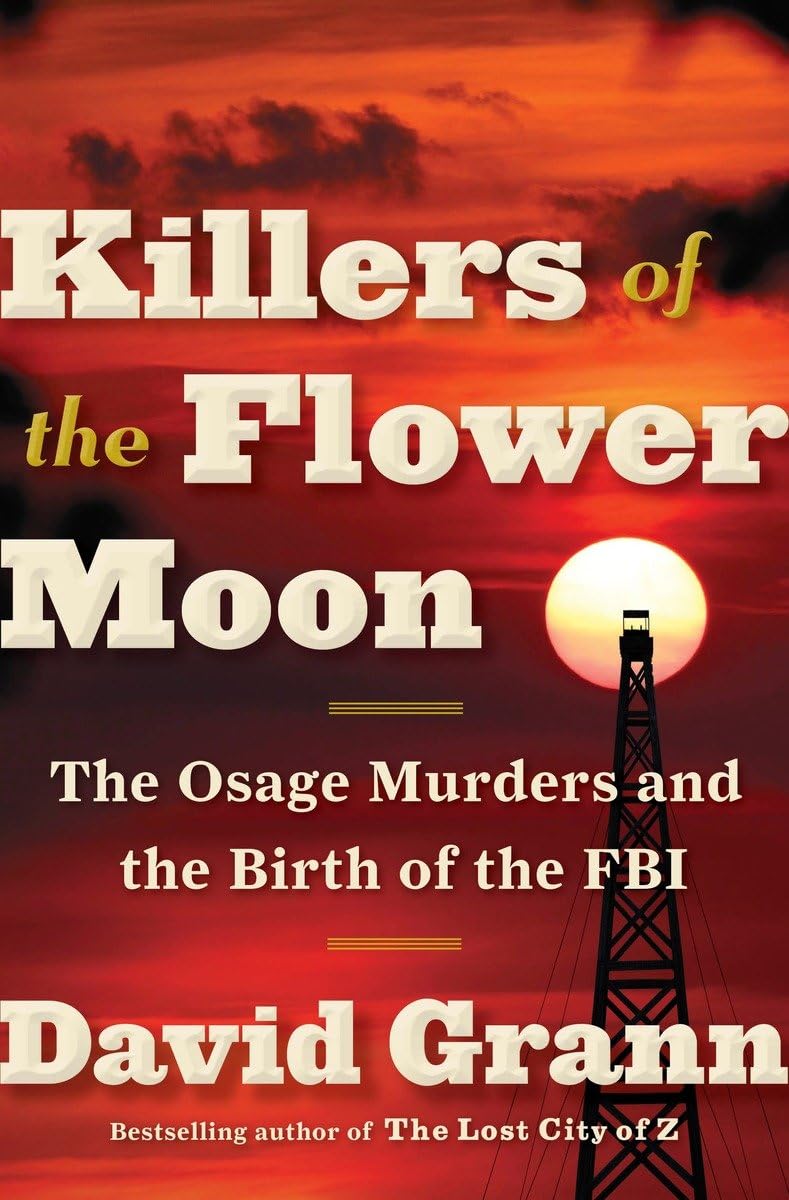Chapter 22: Ghostlands
byChapter 22, “GHOSTLANDS,” reflects on the lingering traces of the Osage Nation’s past, focusing on the transformation of the once-thriving oil boom landscape in Oklahoma. The narrative highlights how the passage of time has eroded many of the physical reminders of this era, such as the towering petroleum derricks that once symbolized rapid wealth and industry. One of the most poignant losses is the disappearance of the “Million Dollar Elm,” where Osage landowners signed lucrative oil leases that temporarily made them among the wealthiest people per capita in the world.
However, that prosperity came at a devastating cost, as greed and corruption led to a series of calculated murders targeting Osage individuals for their wealth. Over the decades, many of the boomtowns that emerged during this frenzied period have faded into obscurity, their once-bustling streets now overtaken by nature. These deserted towns, once filled with ambition and wealth, now serve as ghostly echoes of a time when oil barons and criminals alike sought to exploit the Osage people for financial gain.
Despite this decline, Pawhuska remains a town that continues to hold its place in history, standing as the capital of the Osage Nation. Though some of its buildings have fallen into disrepair, the town remains a vital cultural and administrative hub for the Osage people. In 2006, the Osage Nation reaffirmed its sovereignty by adopting a new constitution, demonstrating their resilience and ongoing commitment to self-determination, even after enduring decades of exploitation and hardship.
The chapter then shifts focus to the author’s visit to Pawhuska in 2012, a journey fueled by a desire to uncover the unresolved mysteries of the Osage murders. At the Osage Nation Museum, the author meets Kathryn Red Corn, the museum’s director, who shares a small but meaningful act of defiance—deliberately removing William K. Hale’s image from a historical photograph. This absence speaks volumes, serving as a symbolic rejection of the man who orchestrated so much pain, ensuring that his presence does not receive a place of honor in the historical narrative curated by the Osage people.
As the investigation deepens, the author meets Margie Burkhart, the granddaughter of Mollie Burkhart, a central figure in the Osage murders who endured profound personal tragedy. Through Margie’s perspective, the reader gains insight into the lingering emotional and psychological wounds passed down through generations. The impact of betrayal and loss still lingers within Osage families, as they continue to grapple with the knowledge that their ancestors were systematically targeted by those they once trusted.
Beyond the historical injustices, the narrative highlights the significance of cultural preservation, particularly in the form of Osage traditions that have persisted despite efforts to erase them. One of the most enduring aspects of Osage heritage is the continuation of sacred dances, which serve as both a tribute to ancestors and a testament to the strength of the community. These traditions not only keep the culture alive but also act as a form of healing, allowing the Osage people to reclaim their identity and resist the forces that sought to dismantle their way of life.
The story also underscores the importance of historical remembrance and the challenges associated with uncovering the full truth of past atrocities. While historians and researchers have made significant strides in piecing together the events of the Osage murders, many aspects remain unresolved due to lost or deliberately concealed evidence. The Osage people, however, refuse to allow their history to be forgotten, actively working to educate future generations about the injustices their ancestors faced and the strength it took to survive them.
Ultimately, “GHOSTLANDS” is a meditation on loss, memory, and resilience, weaving together personal stories with broader historical reflections. The chapter highlights the profound ways in which the past continues to shape the present, as the Osage people navigate the complexities of preserving their heritage while seeking justice for those who were wronged. Their ability to honor the memories of their ancestors while forging a future built on cultural strength and self-governance speaks to their enduring legacy of resistance and survival.


